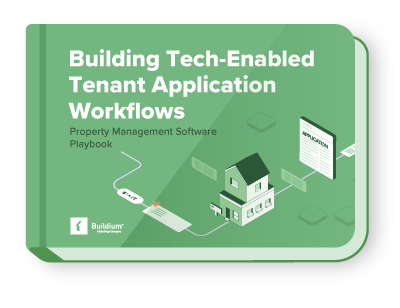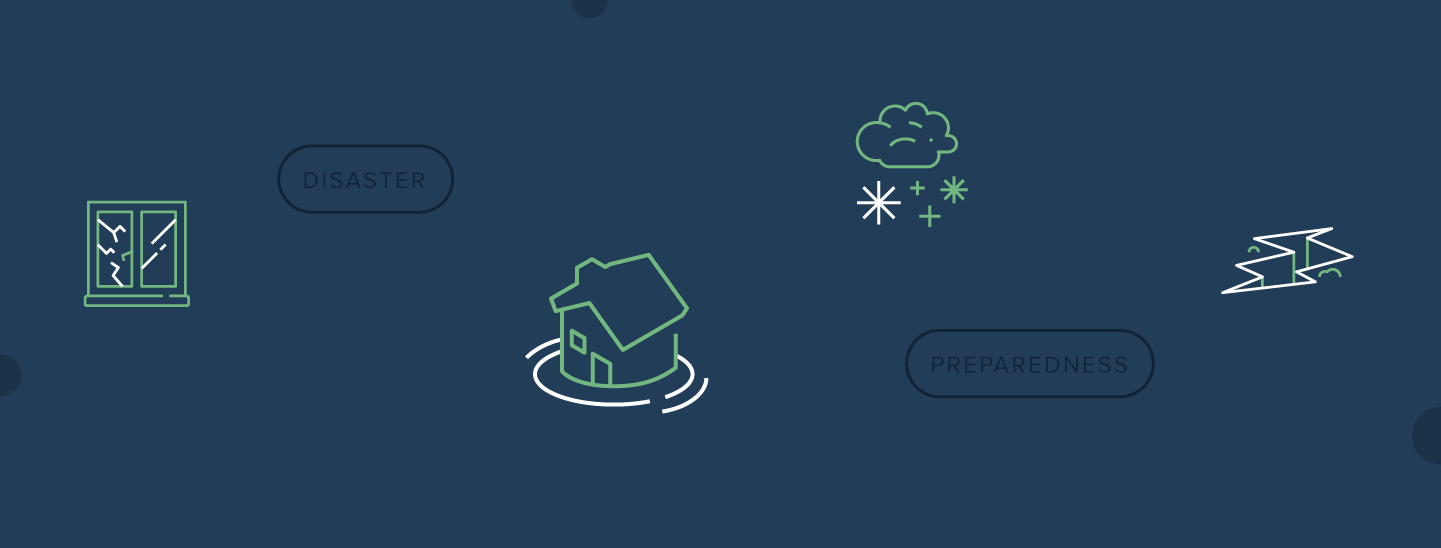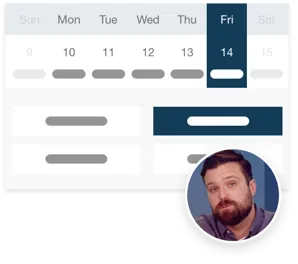You can’t predict when a disaster might impact your property management business, but you can be prepared. Instead of letting the unexpected wreak havoc on your portfolio and tenants, proactively protect them by implementing emergency response best practices.
Start your free trial today!
Try Buildium for free for 14 days. No credit card needed.
Start Your TrialIn this post, we’ll share a practical disaster preparedness checklist for property managers, along with tips to strengthen your emergency plan and close any gaps before they put your business at risk.
Pro Tip: We’ve also created a template disaster preparedness checklist you can download and customize for free using the button towards the top of this page.
Why Create a Disaster Preparedness Checklist Now
A disaster preparedness checklist is all about protecting tenants, preserving property value, and avoiding potential legal liability and financial losses.
Protecting Tenants and Staff
Tenants and staff count on property managers to have a clear course of action during unexpected emergencies. In a disaster, every minute matters and having a plan in place can mean the difference between a safe evacuation and unnecessary risk. That includes Established communication channels, well-defined procedures, and regular drills all help you move quickly and safely when the moment comes.
Preserving Property and Assets
In an emergency, every unmitigated risk, whether it’s a leaky roof before storm season or untested fire alarms, can escalate into tens of thousands of dollars in preventable damage. A strong preparedness plan helps preserve property value and avoids costly downtime.
Legal and Financial Implications
Disasters can carry legal and financial fallout long after the event itself. Property managers may face claims from residents, owners, or regulators if protocols aren’t in place or documented. Stay compliant with building codes, zoning laws, and tenant protections (while carrying proper insurance) to minimize liability and shield your business from costly disputes.
Pro tip: Buildium Property Insurance can give you and your clients peace of mind by protecting residents, owners, and properties, with up to $300,000 in liability coverage with no deductible for resident-caused property damages. Explore your coverage options to stay prepared.
What to Include in a Disaster Preparedness Checklist
Now that you know the “why” behind a disaster preparedness checklist, here’s what it should include:
Risk Assessment
Start by identifying potential property hazards, such as floods, wildfires, earthquakes, severe storms, and power outages. From there, look for vulnerabilities in your property portfolio that could increase its susceptibility to damage. Think building age, flood zones, and other location- or property-specific risks.
By identifying these hazards and vulnerabilities (and their relative risk levels), you can know where to focus your emergency preparedness and maintenance efforts.
Preventive Maintenance Checklist
Next, create a preventative maintenance checklist to keep your properties in top shape. The better their condition, the less likely they are to succumb to damage.
Your preventive maintenance checklist should cover:
- HVAC systems
- Plumbing systems
- Building envelope and structure
For each area, list regular maintenance tasks with due dates and enter them into a property management platform such as Buildium to get automated work order reminders. That way, you’re less likely to let anything fall through the cracks.
Emergency Response Plan
When disaster strikes, you don’t want to waste time or cause confusion by not having a plan. Take time now to set up communication channels and a chain of command for relaying vital information and instructions to staff, tenants, and owners.
Additionally, establish clear evacuation routes and procedures. Then educate your staff and tenants on them. Consider posting detailed maps with emergency contacts and resources in common areas, and don’t forget to guarantee access for those with disabilities.
Safety and Security Measures
Protecting your properties starts before disaster strikes. You can reduce the risk of injury and damage during emergencies by regularly testing fire alarms, sprinklers, and extinguishers. Also look to reinforce windows, doors, and roofing.
Not every disaster comes from nature. Break-ins, vandalism, and theft can cause serious disruption as well. Establish strong access controls with secure locks, keys, and digital passcodes to safeguard residents and assets when it matters most.
Continuity of Operations
Initial disaster response is important, but so is making sure your property management operations don’t grind to a halt. This is where cloud-based property management software is a major asset. If your network or hardware suddenly shuts down, all your business data will be secured and backed up in the cloud, allowing you to recover what you need easily.
You’ll also want to set up a backup plan for tenant housing should your properties become uninhabitable. For example, you could set up agreements with nearby hotels to temporarily house tenants or provide rent relief to help them through the difficult transition.
Pro tip: Partner with Buildium’s Maintenance Contact Center to ensure you maintain phone coverage during emergencies. The call center operates 24/7/365 to respond to tenants, create work orders, and dispatch service technicians.
How to Implement Your Disaster Preparedness Plan
Once you’ve created your disaster preparedness plan, it’s time to implement it. Here’s how:
Communicate with Tenants and Owners
Your disaster preparedness plan won’t do much good if nobody knows about it. Share it with your staff, clients, and tenants via email and/or the resident portal and owner portal on your property management software. Request confirmation of receipt and encourage feedback.
Conduct Regular Training and Drills
To avoid getting rusty on the details of your emergency plan, conduct regular training and drills. These could include fire drills, shelter-in-place exercises, and staff training on first aid and emergency equipment. You should also practice using disaster communication channels.
Update and Review Your Plan Regularly
Your emergency plan should not be a static document. It should evolve with your portfolio’s changing needs. For example, an annual review after severe weather seasons is a smart way to make sure your disaster response plan is still adequate. If not, you can make changes to fill gaps.
5 Tips for Effective Disaster Preparedness
A checklist is only the first step. Use these best practices to build on it and create a disaster plan you can rely on when it matters most.
#1: Protect Your Tenants, Owners, and Units with Property Insurance
Some disasters are unavoidable. To protect you, your tenants, owners, and their properties, it pays to get property insurance. With the right coverage, you can rest easy knowing that you’re protected from financial loss.
For example, Buildium Property Insurance covers up to $300,000 in liability coverage with no deductible for resident-caused property damages, including:
- Fire, smoke, or explosion damages
- Water damage
- Accidental discharge or overflow of water or steam from within a plumbing, heating, air conditioning or automatic fire protective sprinkler system or from within a household appliance falling objects (including but not limited to satellite dishes) freezing of plumbing heating or air conditioning weight of “tenant” personal property
- Burglary
- Riot and civil commotion
- Collapse of the building if directly caused by any of the aforementioned. A plumbing system or household appliance does not include a sump, sump pump, or related equipment or a roof drain, gutter, downspout, or similar fixtures or equipment.
The insurance plan also offers additional coverages and endorsements, such as:
- Loss of rental income
- $10,000 per residence premises (unit), per occurrence
- $50,000 per occurrence aggregate
- Coverage for lost rent if a resident is displaced by a covered event
- Pet damage
#2: Collaborate with Local Emergency Services
Take advantage of emergency preparedness services in your area, such as the local fire and police departments. They may have educational resources to share. You could even invite them to teach part of your emergency training.
#3: Use Reliable Software and Mobile Apps
A disaster is bad enough without having to deal with unreliable software. Invest in robust property management apps to centralize important communication and documentation. Consider setting up mobile alerts for tenant messaging and task management, too.
#4: Don’t Neglect Insurance and Financial Preparedness
To make sure you can cover unexpected repairs and tenant displacement, maintain an emergency budget, and understand your insurance policy’s deductibles and coverage limits. Not sure how much to save? Carefully track your expenses and income with accounting software and adjust your emergency budget accordingly.
#5: Invest in Tenant Communication and Education (without Overintruding)
Finally, involve tenants in preparing for disasters. This means educating them on emergency communication channels and procedures, welcoming feedback, and sharing helpful resources, such as building maps and emergency contact phone numbers. Just don’t overwhelm them with too much information at once. Keep it minimal, but regular.
Stay Prepared Year-Round with the Right Tools at the Ready
Ultimately, emergency preparedness is about working through and testing each step you’ll take in the event of a disaster. The clearer, and more methodical you are now, in the planning phase, the better off you’ll fare when it matters. To that end, we recommend downloading our disaster preparedness checklist using the button at the top of this and customizing it to meet your portfolio’s specific needs. As you build your plan, remember these key takeaways:
Key Takeaways:
- Prioritize safety: Protect tenants, staff, and owners first and foremost.
- Preserve assets: Preventive maintenance checklists and disaster planning help safeguard property value.
- Plan for continuity: Use cloud-based tools like Buildium to keep operations running smoothly.
- Stay compliant and insured: Reduce liability and financial risk with the right coverage.
- Communicate and train: Keep tenants, owners, and staff informed with regular updates and drills.
With the right disaster preparedness checklist and tools, you’ll have the confidence to handle emergencies while protecting your business, clients, and residents.
You can start exploring your options for mission critical property management software by trying out Buildium with a free 14-day, no-risk trial or by scheduling a demo to see how our software can keep your business running even when disaster strikes.
Frequently Asked Questions
What essential items should be included in a disaster preparedness checklist for property managers?
A disaster preparedness checklist should cover risk assessments, preventive maintenance, emergency response plans, safety measures, and continuity of operations. Each of these categories helps property managers identify hazards, protect buildings and residents, and keep operations running even during disruption.
How can property managers effectively communicate emergency procedures to tenants?
Property managers can use email, text, and resident portals to share clear emergency plan instructions and updates. The key is to communicate before, during, and after a disaster so tenants know what to expect and where to go for reliable information.
What steps should property managers take to secure a property before an anticipated disaster?
They should inspect and reinforce vulnerable building areas, secure loose objects, test safety equipment, and ensure their insurance coverage is up to date. Proactive steps like trimming trees, sealing windows, and stocking emergency supplies can reduce damage and make recovery easier.
How can property managers assist tenants with special needs during a disaster?
Property managers can ensure proper support during emergencies by identifying tenants’ needs in advance and creating disability-accessible evacuation plans. Coordinating with local emergency services and keeping updated tenant records helps ensure everyone receives the assistance they require.
What are the best practices for conducting disaster preparedness drills in multi-unit properties?
Schedule regular, realistic drills that involve both staff and tenants. Make sure to clearly explain procedures, provide feedback afterward, and rotate the types of drills so participants are prepared for different kinds of emergencies. Reviewing lessons learned ensures the plan gets stronger each time.
Read more on Maintenance

